When deciding between trekking skis and snowshoes for your winter adventures, the choice depends on terrain, snow conditions, and personal preferences. Here's a quick breakdown:
- Trekking Skis: Best for speed on flat terrain and downhill slopes. Requires skill and specialized boots but can cover long distances efficiently.
- Snowshoes: Ideal for deep snow, dense forests, and steep inclines. Easier to use, compatible with regular boots, but slower and more effort-intensive.
- Snowfeet Products: A hybrid option offering portability, boot compatibility, and versatility across various terrains.
Quick Comparison
| Feature | Trekking Skis | Snowshoes | Snowfeet Products |
|---|---|---|---|
| Speed | Fast on flat/downhill | Slow, steady pace | Varies by model |
| Learning Curve | Steep, requires practice | Minimal, easy to use | Moderate, easy basics |
| Maneuverability | Limited in tight spaces | Excellent in dense areas | High, compact design |
| Weight | Heavy (7–9 lbs per pair) | Light (2–4 lbs per pair) | Lightweight (from 2.2 lbs) |
| Boots Needed | Specialized ski boots | Regular winter boots | Works with various boots |
| Price Range | $400–$800+ | $150–$300 | $150–$699.90 |
Each option has its strengths: trekking skis for speed, snowshoes for simplicity, and Snowfeet for versatility. Choose based on your terrain, skill level, and snow conditions.
Trekking Skis vs Snowshoes: Main Differences
Basic Design and Function
Trekking skis and snowshoes serve different purposes based on how they move over snow. Trekking skis allow for a smooth gliding motion, making them efficient on flat terrain and downhill slopes. On the other hand, snowshoes are designed to keep you afloat in deep snow, offering a steady and more natural walking experience. These contrasting designs mean trekking skis are faster in the right conditions, while snowshoes are better suited for consistent, straightforward movement. Now, let’s look at the skills required for each option.
Learning Time and Skills
Snowshoes are straightforward - they mimic walking, so little to no training is needed. Trekking skis, however, demand more technique, including balance and turning skills. This difference in ease of use leads us to considerations like storage and boot compatibility.
Storage and Boot Options
When it comes to storage and boots, the two options differ significantly. Trekking skis are long and require specialized ski boots, which can take up a lot of space. Snowshoes, however, are compact and work with standard winter boots, making them easier to transport. Products like Snowfeet* address these challenges by offering a more portable alternative. Snowfeet* mini skis can fit in a backpack and are compatible with ski boots (sizes 36–49 EU / 4.5–14.5 US) and snowboard boots (sizes 38–49 EU / 6–14.5 US).
"With these little skis, you feel much more agile, faster, and above all – comfortable. No buckles, no heavy boots – just strap in and go." - Jakub F [4]
These distinctions become especially important in mixed-terrain adventures, where ease of transport and adaptability to changing snow conditions can make all the difference. Up next, we’ll dive deeper into specific product features and options.
Snowshoes vs. Skis | What is Best for Winter Backpacking?
Pros and Cons
When deciding between trekking skis and snowshoes, each option has its strengths and challenges.
Trekking skis are great for covering flat and downhill terrain quickly and efficiently. However, they require advanced skills, can be awkward to transport, and often come with the added expense of specialized boots and bindings.
Snowshoes, on the other hand, are easy to use and adaptable. Their straightforward design makes them accessible to beginners, and they perform well in deep snow and dense brush. The trade-off? They’re slower and can require more physical effort over long distances.
Equipment Comparison Chart
| Feature | Trekking Skis | Snowshoes | Snowfeet* Products |
|---|---|---|---|
| Speed | Fast on flat and downhill terrain | Slow but steady pace | Varies by model |
| Learning Curve | Steep – requires practice | Minimal – simple walking technique | Moderate – basics are easy to learn |
| Maneuverability | Limited in tight spaces | Excellent in brush and tight areas | High, thanks to shorter lengths |
| Equipment Weight | Heavy (7–9 lbs per pair) | Light (2–4 lbs per pair) | Lightweight (starting at 2.2 lbs) |
| Boot Compatibility | Needs specialized ski boots | Works with regular winter boots | Compatible with various boot types |
| Price Range | $400–$800+ | $150–$300 | $150–$699.90 |
| Storage | Requires significant space | Compact and easy to store | Portable – fits in a backpack |
| Best Conditions | Packed snow, groomed trails | Deep powder, varied terrain | Works well across multiple conditions |
Snowfeet* products offer a middle ground by combining the speed and efficiency of skiing with the portability of snowshoes. With options like 44 cm skiskates and 120 cm short skis, they provide better maneuverability and work with a variety of boots, making them a more accessible choice for many.
Next, we’ll take a closer look at how Snowfeet* models stand out from traditional options and meet a range of backcountry needs.
sbb-itb-17ade95
Best Uses and Snow Conditions
Distance Travel
When it comes to flat terrain, trekking skis are a faster and less physically demanding option compared to snowshoes. For example, a 15-mile route that might take just a few hours on skis could turn into an overnight trek with snowshoes [1].
Snowfeet Skiblades (120 cm) are a great choice for efficient gliding and handling a variety of snow conditions.
| Terrain Type | Best Equipment Choice | Performance Notes |
|---|---|---|
| Flat, Dense Snow | Trekking Skis/Skiblades | Fastest option; requires less energy |
| Broken Trails | Snowshoes (Technical Models) | Offers stability with moderate speed |
| Deep Powder | Traditional Snowshoes | Provides better flotation but at a slower pace |
| Mixed Conditions | Snowfeet Products | Performs well across varying snow conditions |
For technical terrain, though, the focus shifts to gear that prioritizes maneuverability.
Technical Terrain
In more challenging or technical terrain, the right gear can make all the difference. Snowshoes are particularly useful in dense forests, where navigating tree wells and thick brush requires agility [1]. Modern snowshoes often feature aggressive crampons for grip, while traditional designs excel in deep powder by offering better flotation [1].
Snowfeet Skiskates (44 cm) shine in these settings. Their compact size allows for quick direction changes and precise control, making them ideal for steep slopes, tight spaces, or transitions between different snow types. This makes them especially handy in areas where traditional trekking skis, while faster on open slopes, can feel bulky and hard to manage [1].
Snowfeet* Product Guide
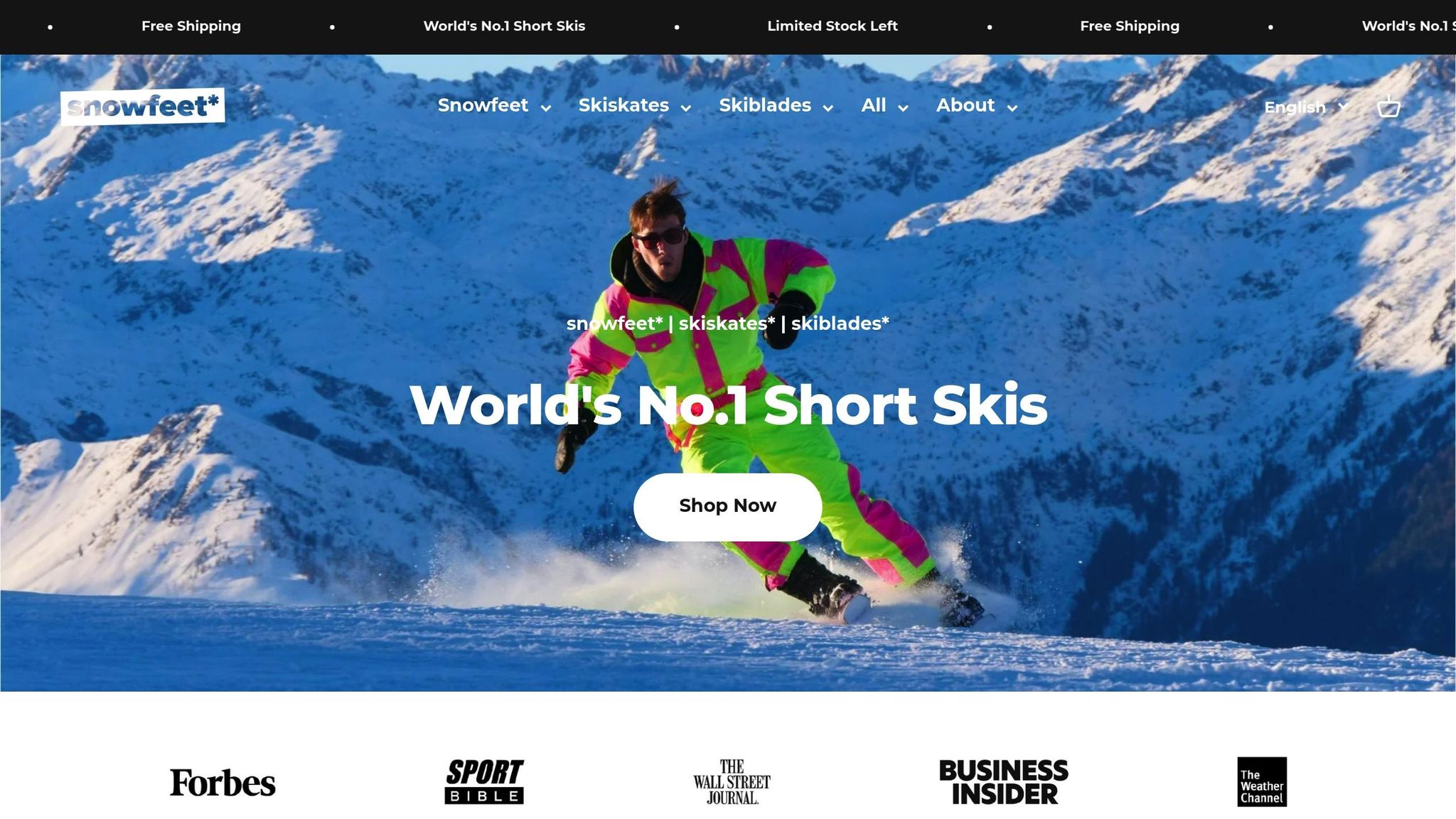
Snowfeet* Models and Sizes
Snowfeet* offers a range of compact options for backcountry adventures. The lineup includes Skiblades in three lengths (65 cm, 99 cm, and 120 cm) and Skiskates in smaller sizes (38 cm, 44 cm, and 50 cm).
| Model | Length | Best For | Price |
|---|---|---|---|
| Mini Ski Skates | 38 cm | Beginners, flat terrain | From $150 |
| PRO Ski Skates | 50 cm | Advanced users, technical terrain | $250 |
| Skiskates | 44 cm | Intermediate users, mixed conditions | From $390 |
| Skiblades | 65 cm | All-around use | From $450 |
| POWDER Skiblades | 99 cm | Deep snow conditions | From $490 |
| Short Skis | 120 cm | Extended backcountry trips | $690 |
This selection highlights how Snowfeet* offers something different compared to traditional ski gear.
Snowfeet* vs Major Ski Brands
Unlike big-name brands like Rossignol and Atomic, which focus on full-length skis that require specific boots, Snowfeet* emphasizes portability and ease of use. Its compact design and wood core construction meet industry standards while offering a simpler alternative to traditional trekking skis.
"With these little skis, you feel much more agile, faster, and above all – comfortable. No buckles, no heavy boots – just strap in and go." - Jakub F, Snowfeet User [5]
This practical design makes Snowfeet* a great choice for those looking for a lightweight, hassle-free experience.
Snowfeet* Advantages
Here’s what sets Snowfeet* apart:
- Compact and Portable: Easily fits in a backpack, unlike standard skis.
- Boot Compatibility: Works with various types of boots, eliminating the need for specialized footwear.
- Enhanced Maneuverability: Shorter lengths make them ideal for navigating tight spaces while still gliding smoothly on open trails.
"In my opinion, Skiskates is the best product for slopes we developed so far. I love how easy they are to ski and skate and how many different kinds of tricks I can perform without much effort and almost no restrictions." - Zbyněk, Snowfeet* founder [4]
With a 4.9/5 rating from over 1,100 reviews, Snowfeet* continues to impress users with its performance across different snow conditions.
Making Your Choice
Pick gear that matches your needs and experience level. For those just starting out, Snowfeet* Mini Ski Skates are an excellent choice - they're easy to use and portable, making them perfect for local trails. Use the table below to help identify the best Snowfeet* model for your preferences.
| Factor | What to Consider | Recommended Snowfeet* Option |
|---|---|---|
| Terrain Type | Groomed trails or powder | 99 cm POWDER Skiblades for deep snow; 65 cm Skiblades for mixed conditions |
| Distance | Short trips or longer tours | 120 cm Short Skis for extended journeys |
| Skill Level | From beginner to expert | 44 cm Skiskates for intermediate users; 50 cm PRO Ski Skates for advanced riders |
| Boot Compatibility | Regular winter boots or ski/snowboard boots | Mini Ski Skates, Skiblades, and Short Skis work with regular winter boots; Skiskates pair best with ski or snowboard boots |
If you're tackling more challenging terrain, the 50 cm PRO Ski Skates provide excellent maneuverability and stability, giving you greater control. For backcountry adventures, the 120 cm Short Skis strike a great balance between portability and performance. Their wider shape ensures better float in deep snow while maintaining the compact design Snowfeet* is known for.
Snow conditions also play a role. Wider models, like the 99 cm POWDER Skiblades, perform well in fresh powder, while shorter options, such as the 44 cm Skiskates, are better suited for groomed trails [2].
Snowfeet* models are designed to enhance your experience across various terrains - whether you're exploring hiking trails, hitting slopes, or enjoying snowparks. Plus, many models work seamlessly with standard winter boots, adding convenience to your adventures [3].
FAQs
How do I decide between trekking skis and snowshoes for winter backcountry adventures?
Choosing between trekking skis and snowshoes depends on several factors, including terrain, skill level, trip goals, and snow conditions. Trekking skis are ideal for open, low-angled terrain and longer distances, offering speed and efficiency. They’re a great choice if you’re comfortable with skiing or want to cover more ground quickly. Snowshoes, on the other hand, shine in steep, forested, or uneven terrain and are easier to use for beginners. They’re also better suited for trips where you’ll be carrying a heavier pack or navigating variable snow.
Consider your group’s gear as well - using the same equipment ensures everyone travels at a similar pace. Think about what matters most for your adventure: speed, ease of use, or tackling challenging terrain. If you’re looking for a versatile, portable alternative, Snowfeet’s Skiblades or Skiskates offer a unique way to explore the backcountry with a blend of fun and practicality.
How do Snowfeet products compare to traditional trekking skis and snowshoes in terms of versatility and ease of use?
Snowfeet products, like Skiskates and Skiboards, stand out for their compact size and versatility, making them an excellent alternative to traditional trekking skis and snowshoes. Unlike bulky skis or snowshoes, they are lightweight and portable, allowing for easy transport and quick setup - perfect for spontaneous winter adventures.
Skiskates combine skiing and skating movements, offering a unique and fun experience on the snow. Skiboards, on the other hand, are easier to control than traditional skis, making them great for beginners or those seeking a more agile ride. They’re also ideal for experienced skiers looking to try something new, with their design enabling sharp turns and dynamic maneuvers. Whether you're exploring backcountry trails or hitting the slopes, Snowfeet products deliver a balance of convenience and performance.
What is the best Snowfeet model for tackling mixed terrain and different snow conditions?
For mixed terrain and varying snow conditions, Snowfeet Skiblades and Skiskates offer excellent versatility. Models like the Skiblades 99 cm and 120 cm are ideal for longer strides and more stability on uneven surfaces, making them a great choice for diverse backcountry adventures. On the other hand, the compact Skiskates 44 cm are lightweight and highly portable, perfect for quick transitions and tighter, more controlled movements in changing snow conditions.
Your choice ultimately depends on your preferred activity style and terrain. If you’re covering longer distances or tackling deeper snow, the longer Skiblades provide better float and glide. For shorter, more dynamic outings or mixed terrain with packed snow, the Skiskates offer unmatched agility and convenience.

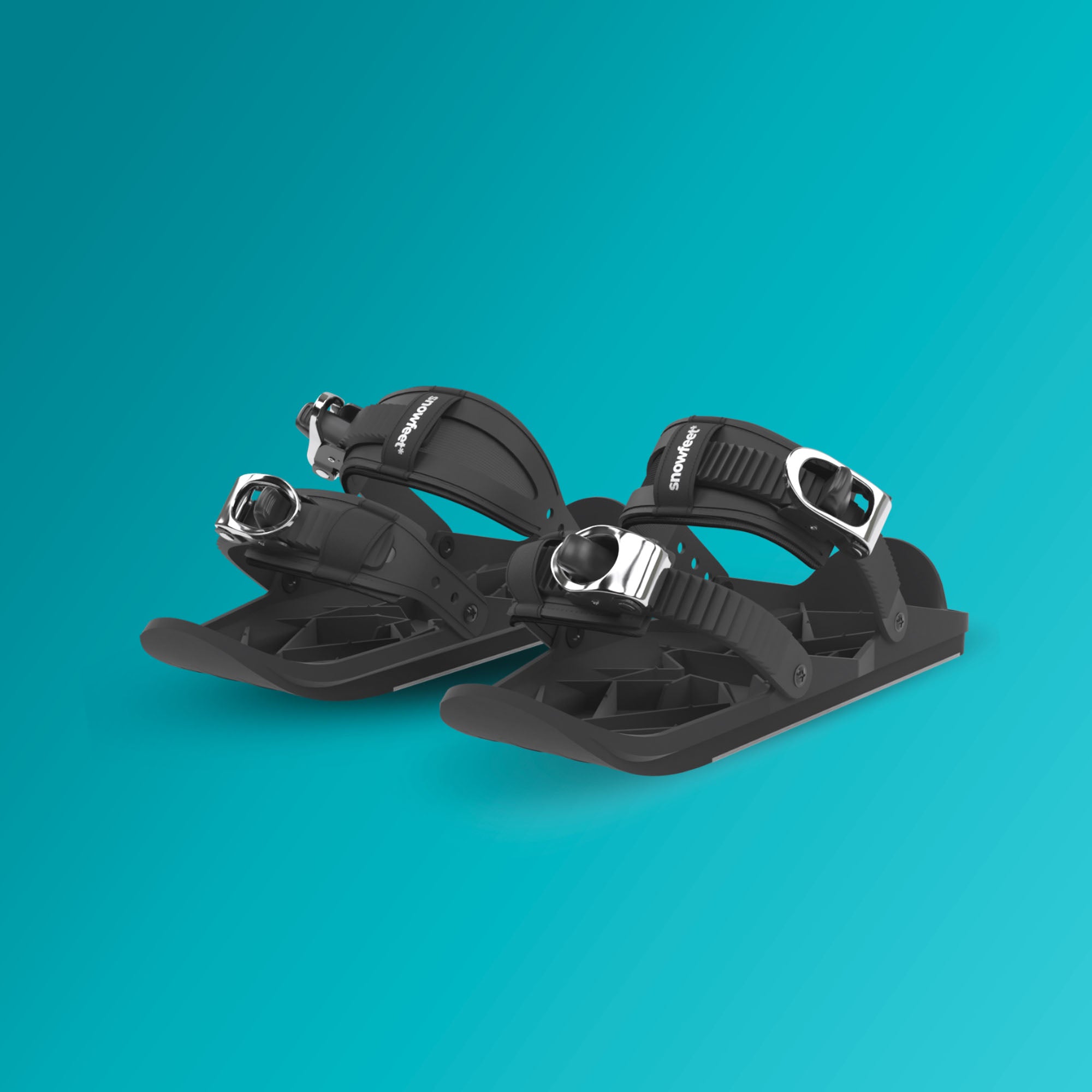


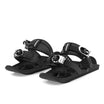
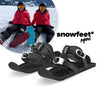

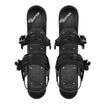


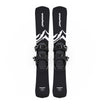
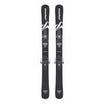
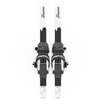
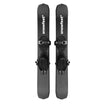
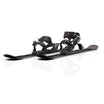
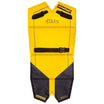

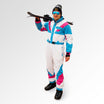
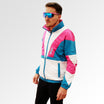
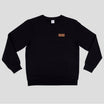
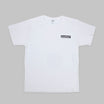
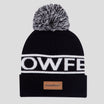
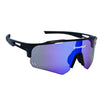
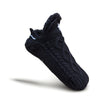
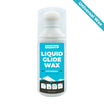
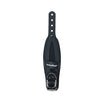
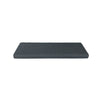
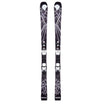




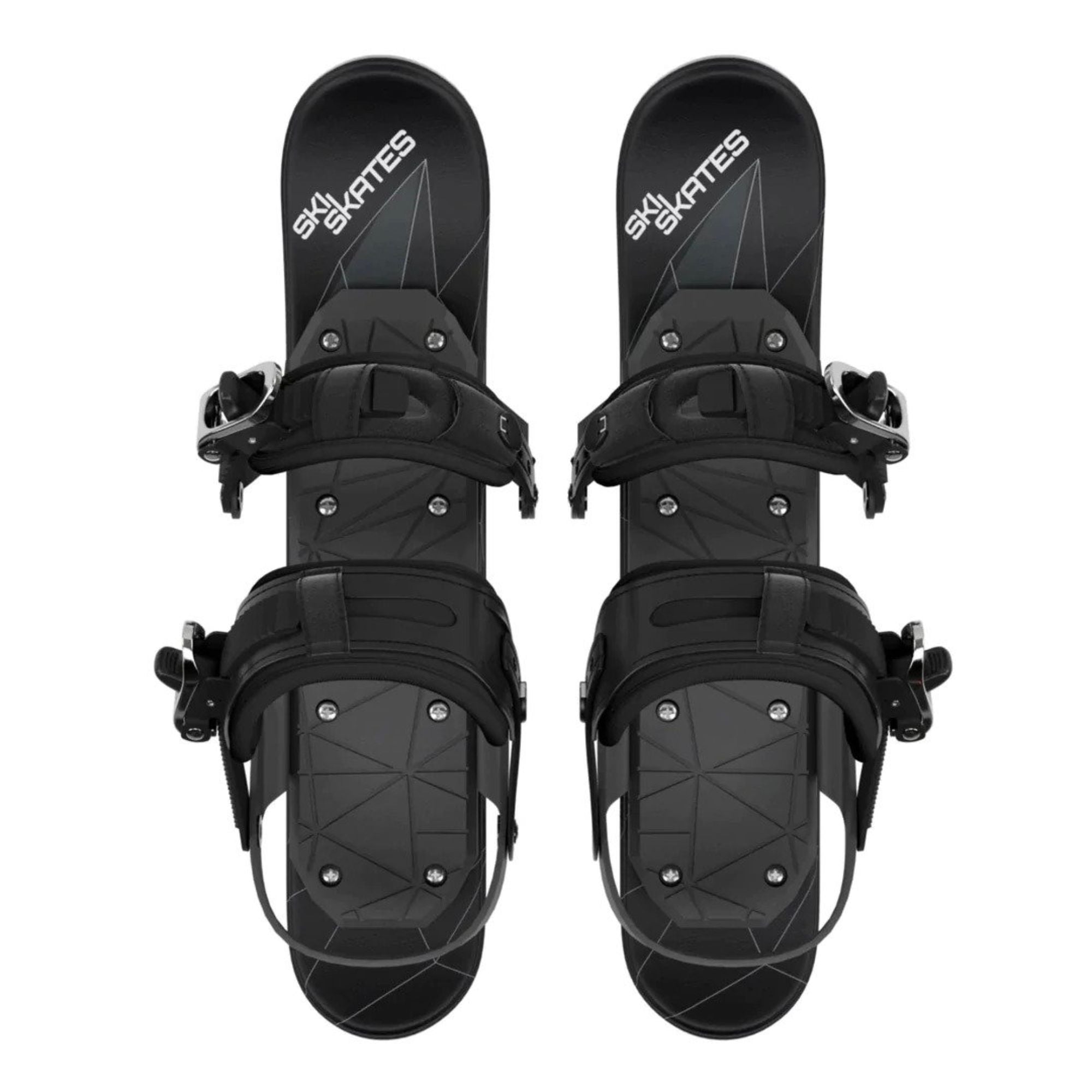
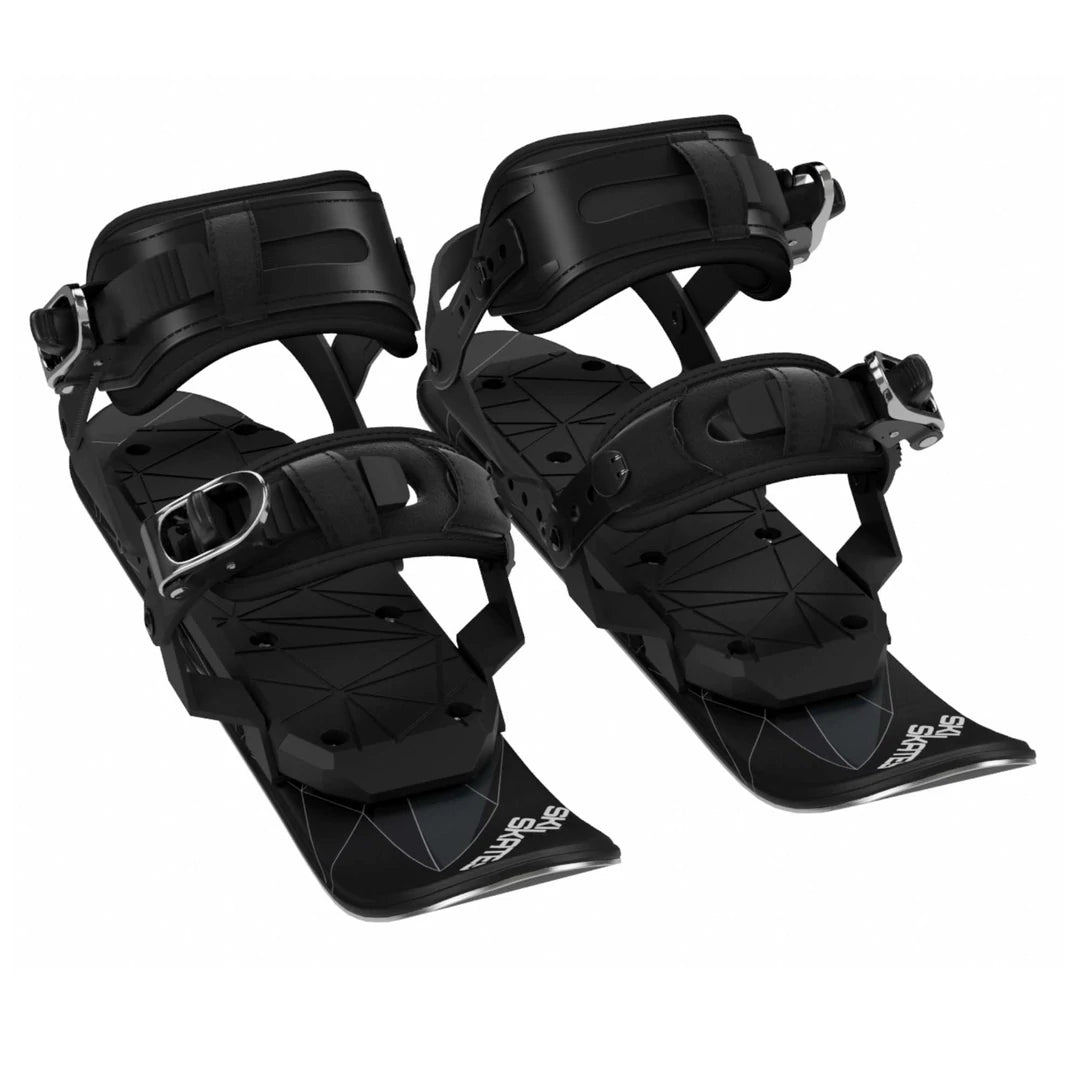
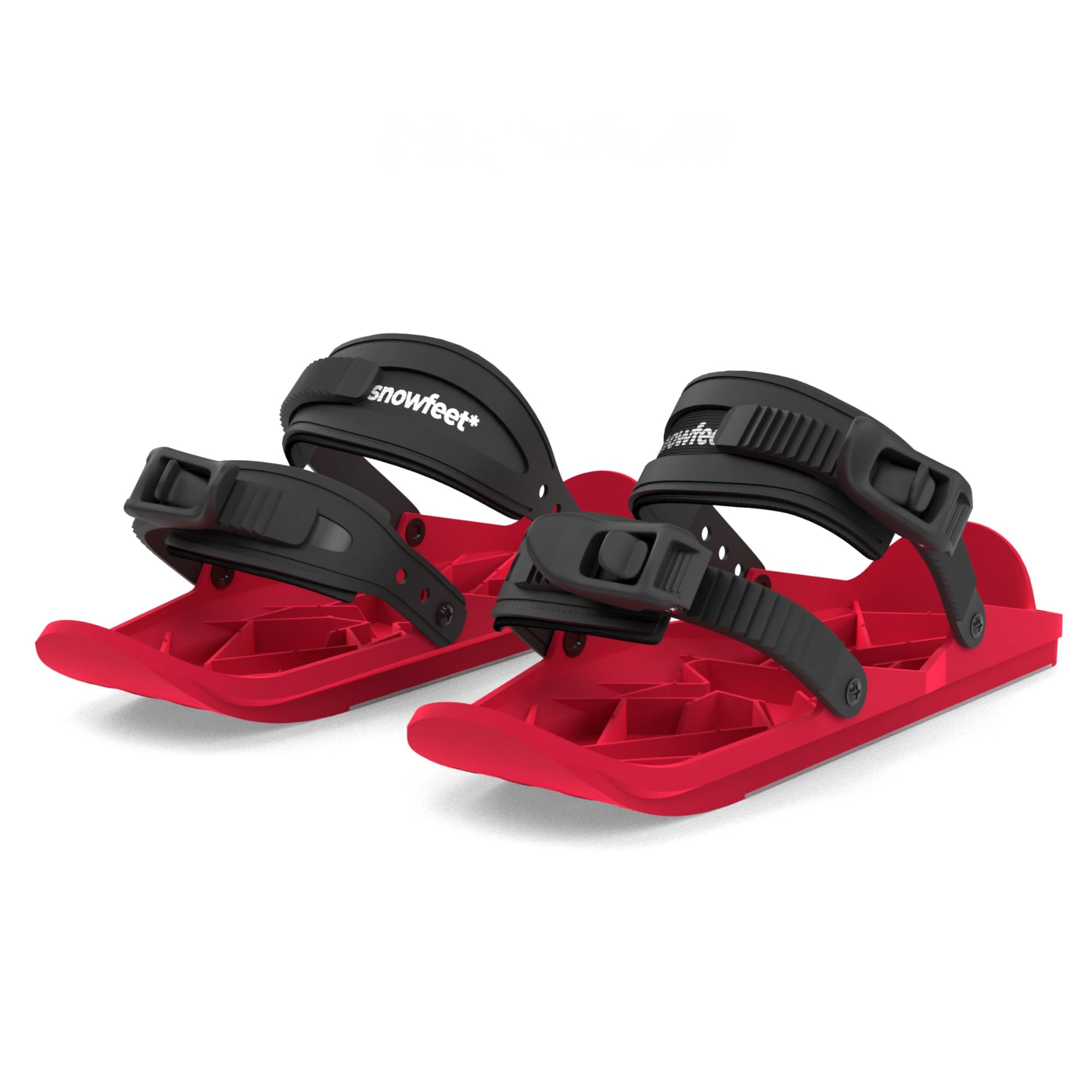





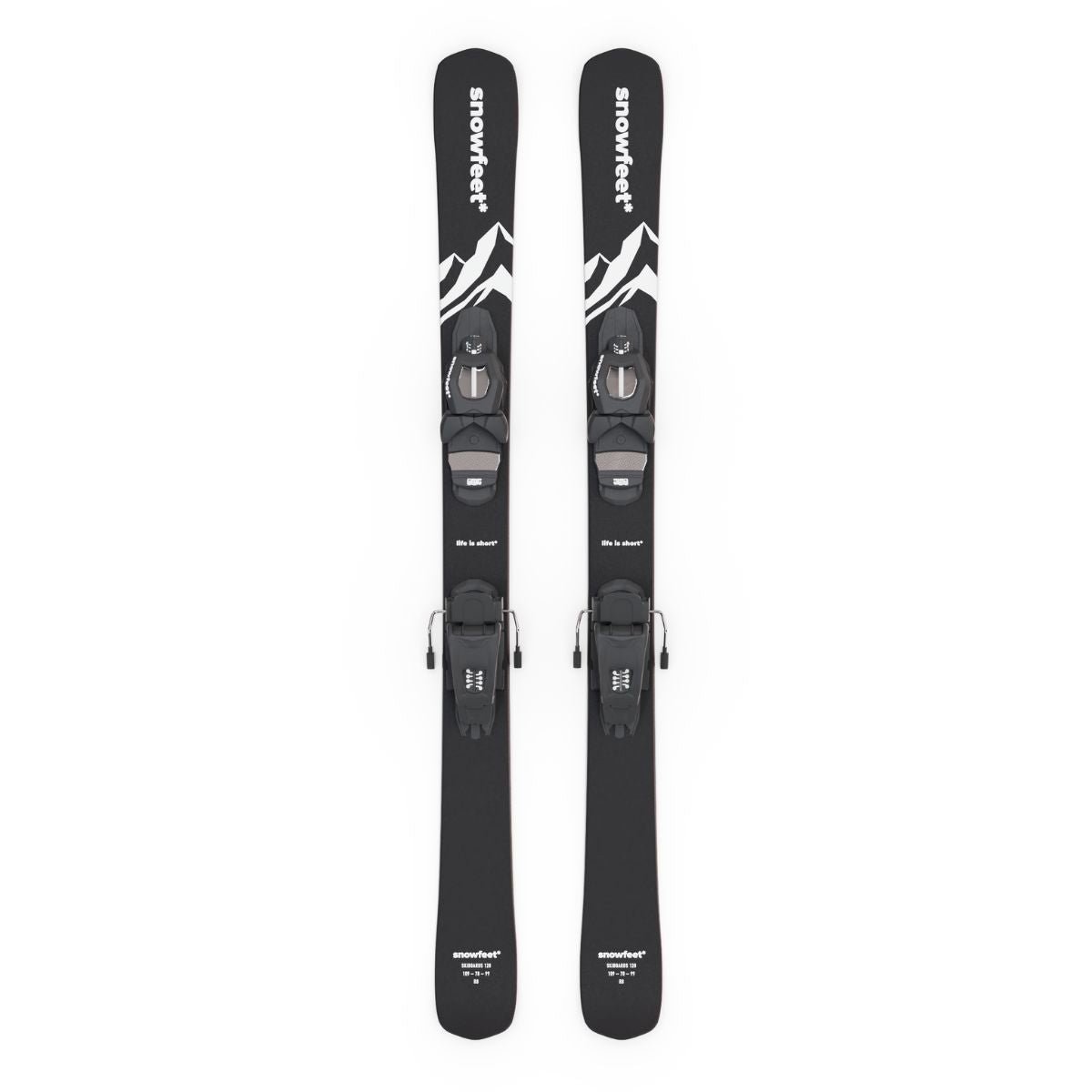
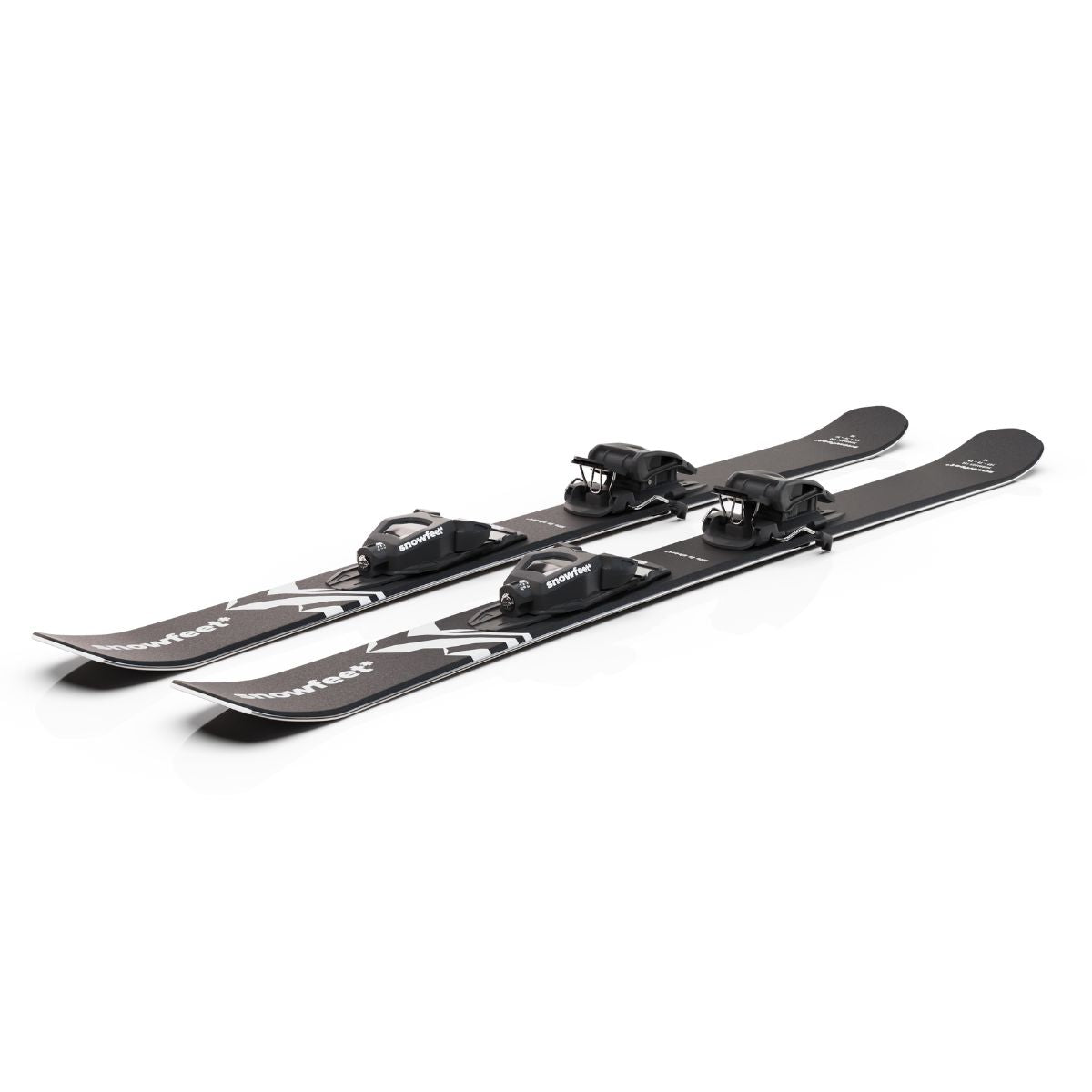
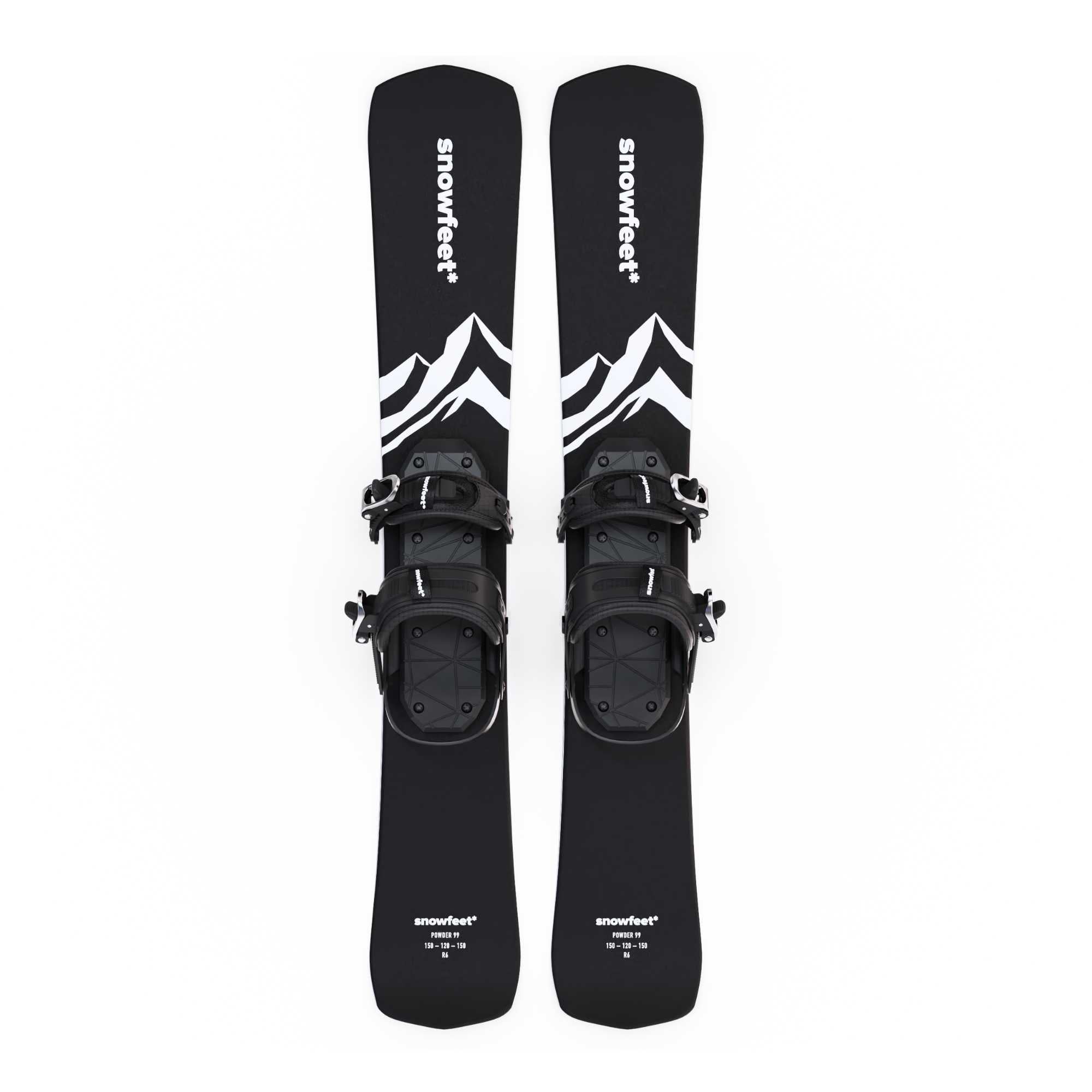
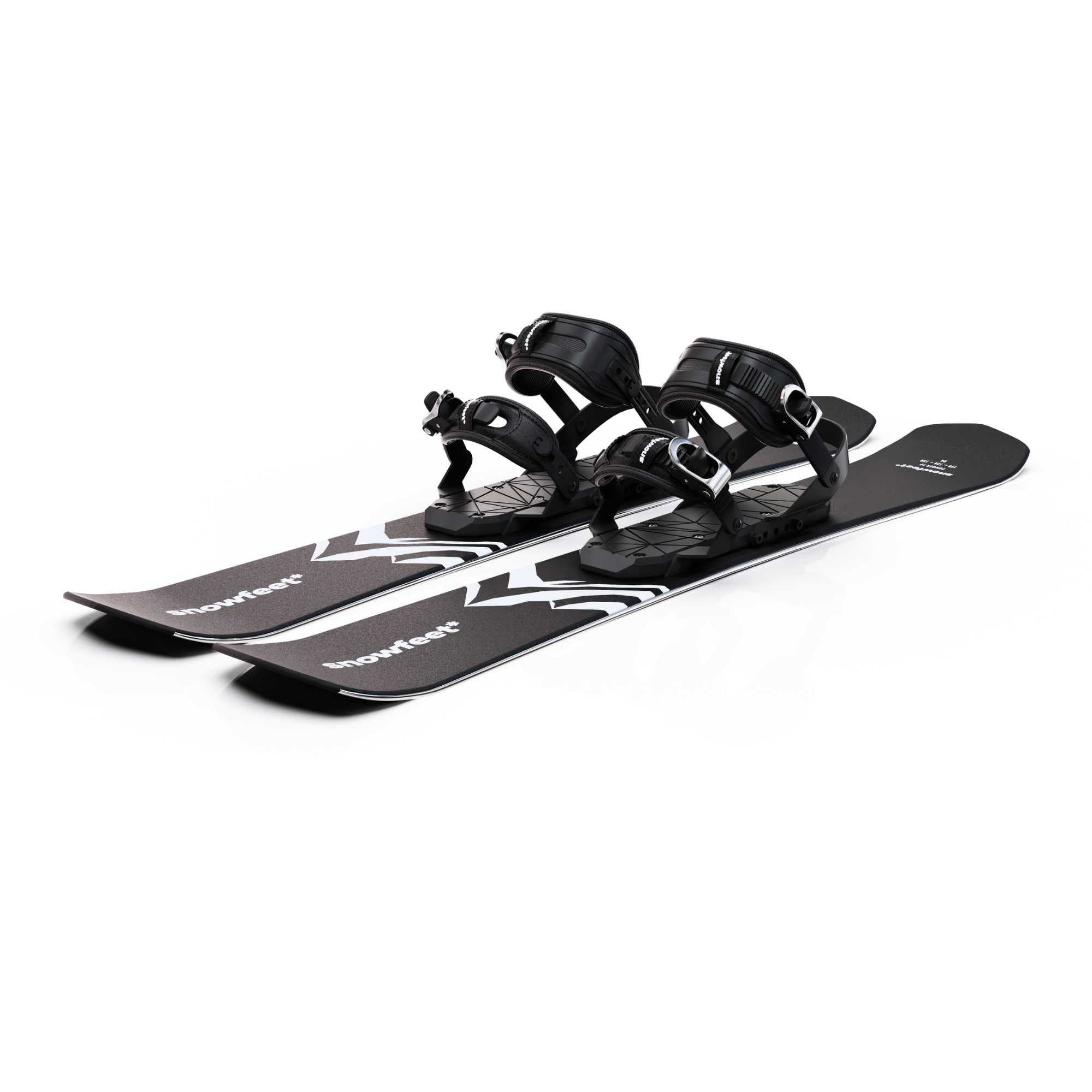
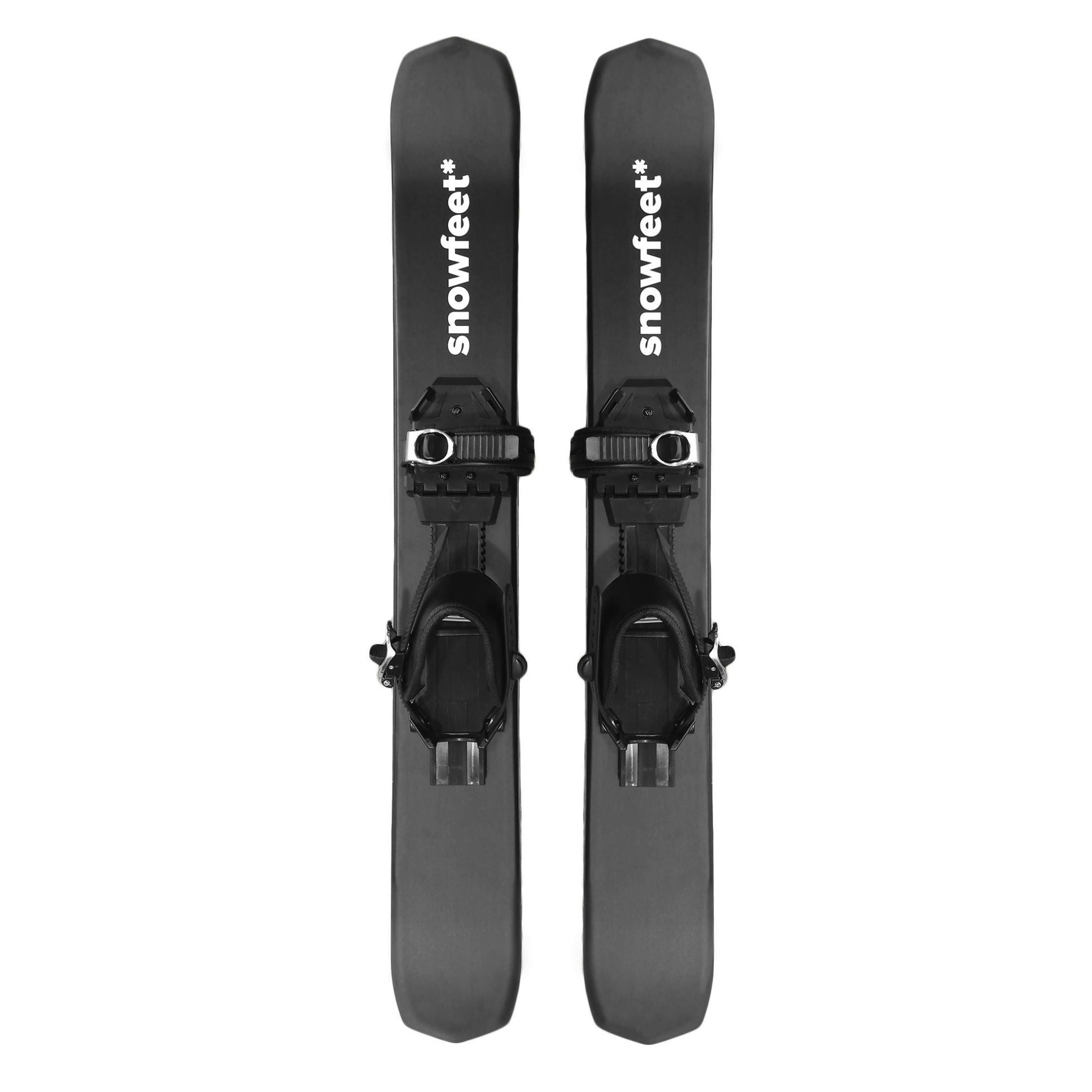
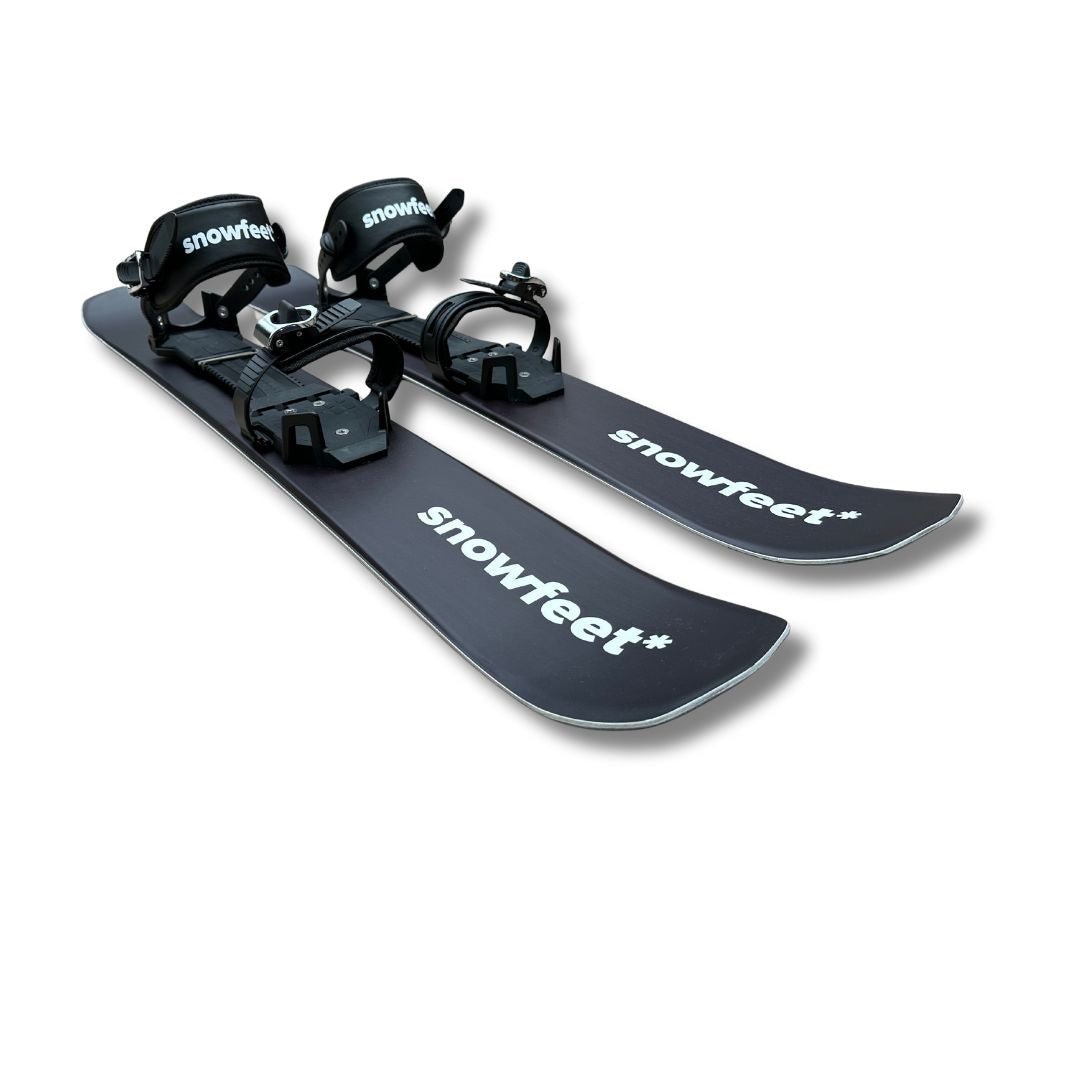
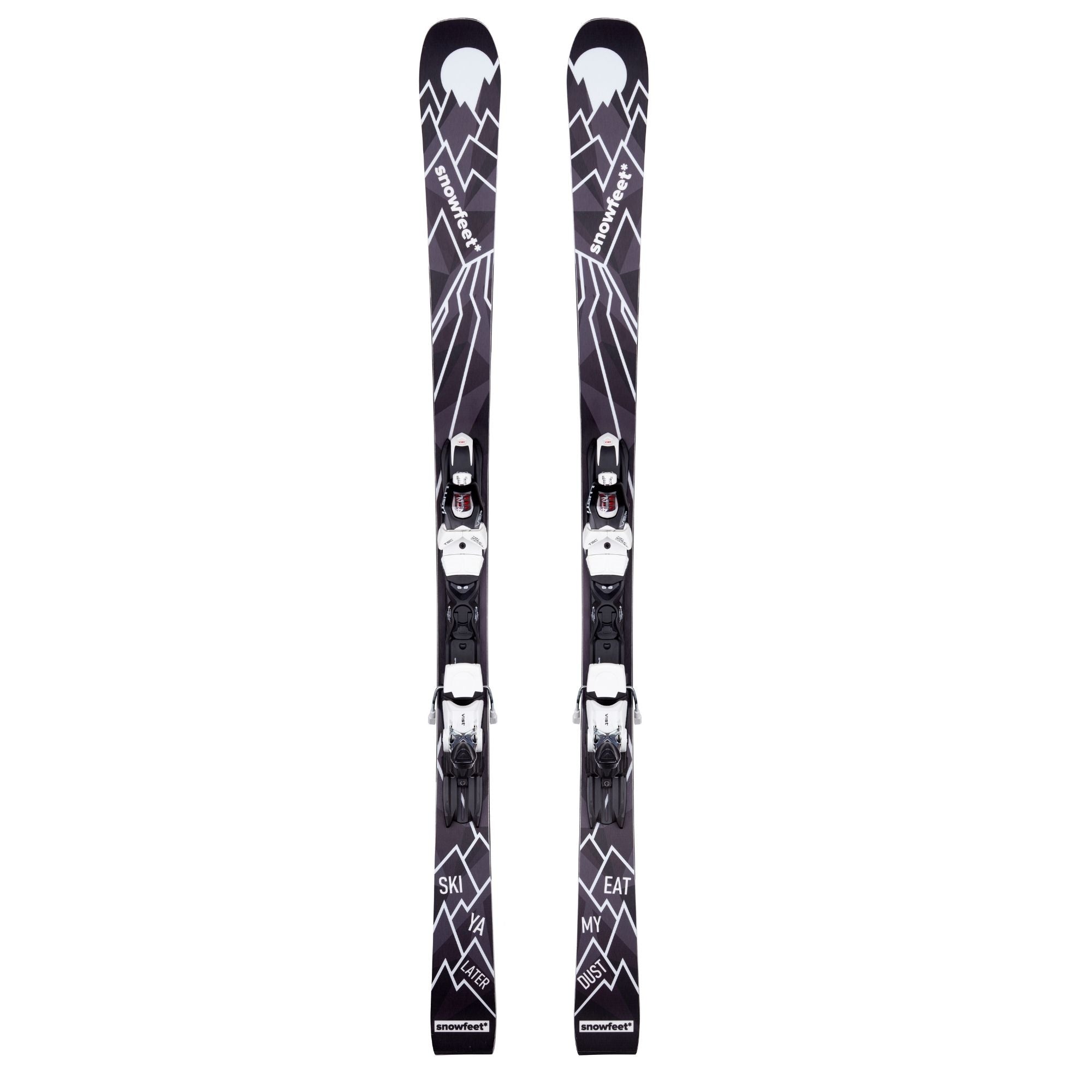
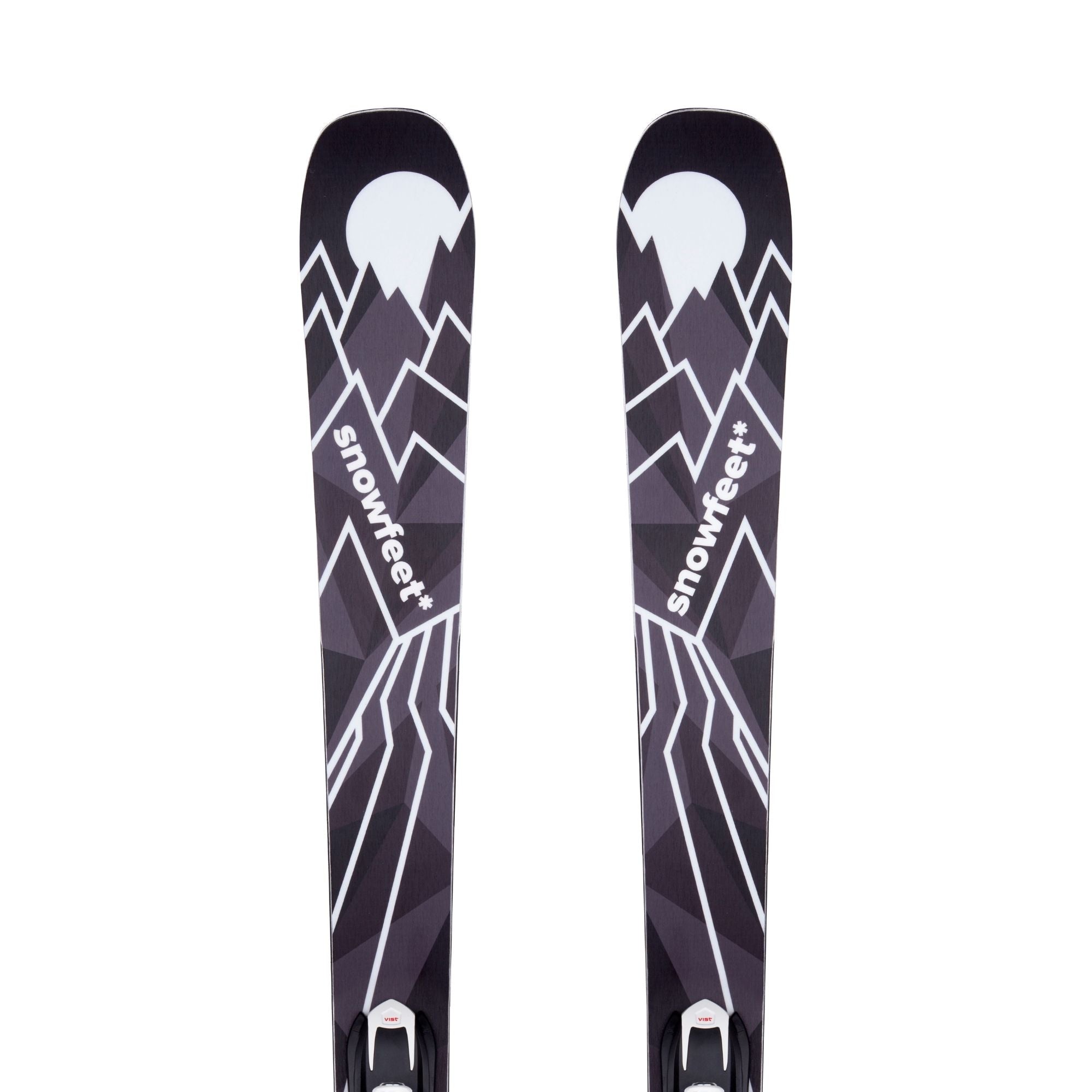
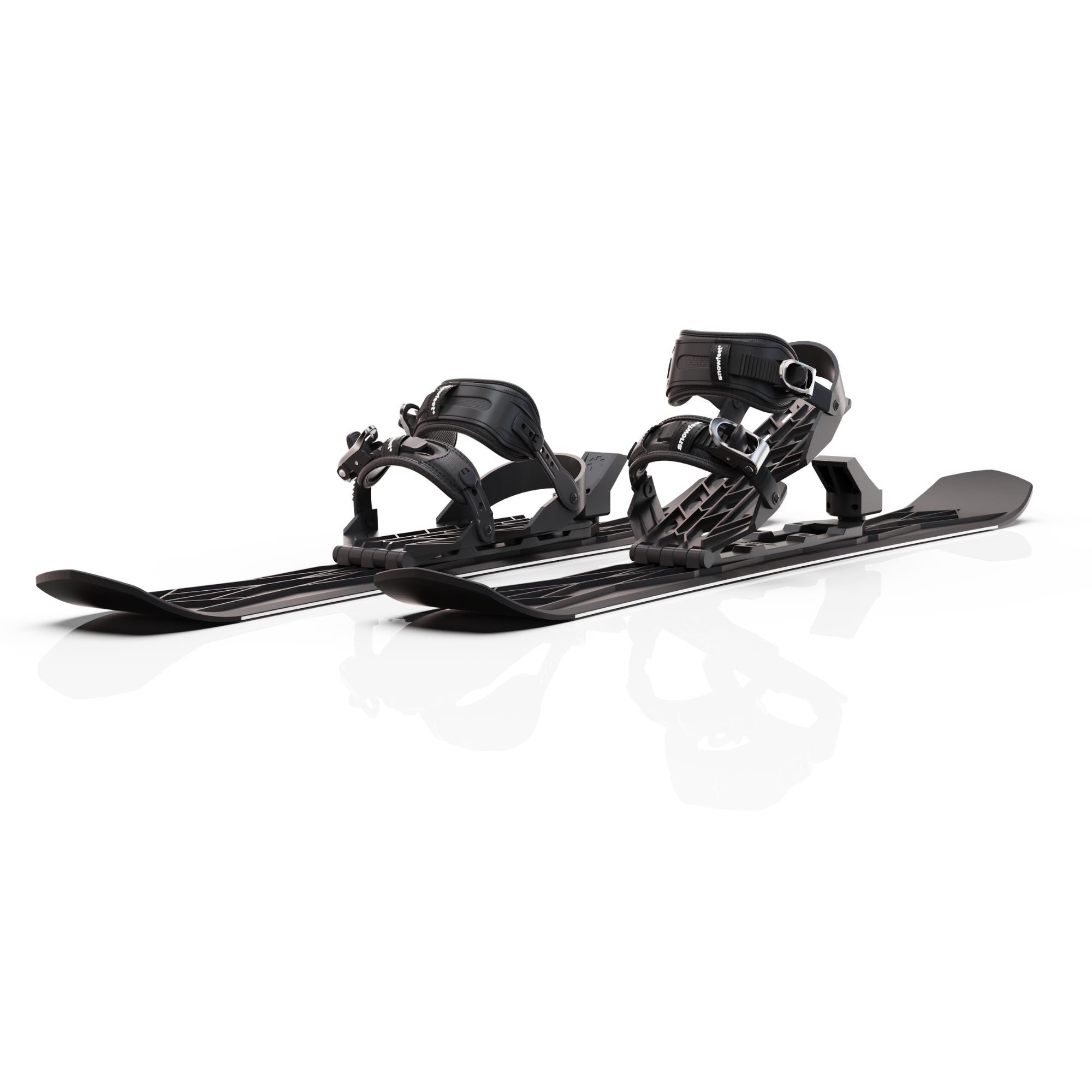

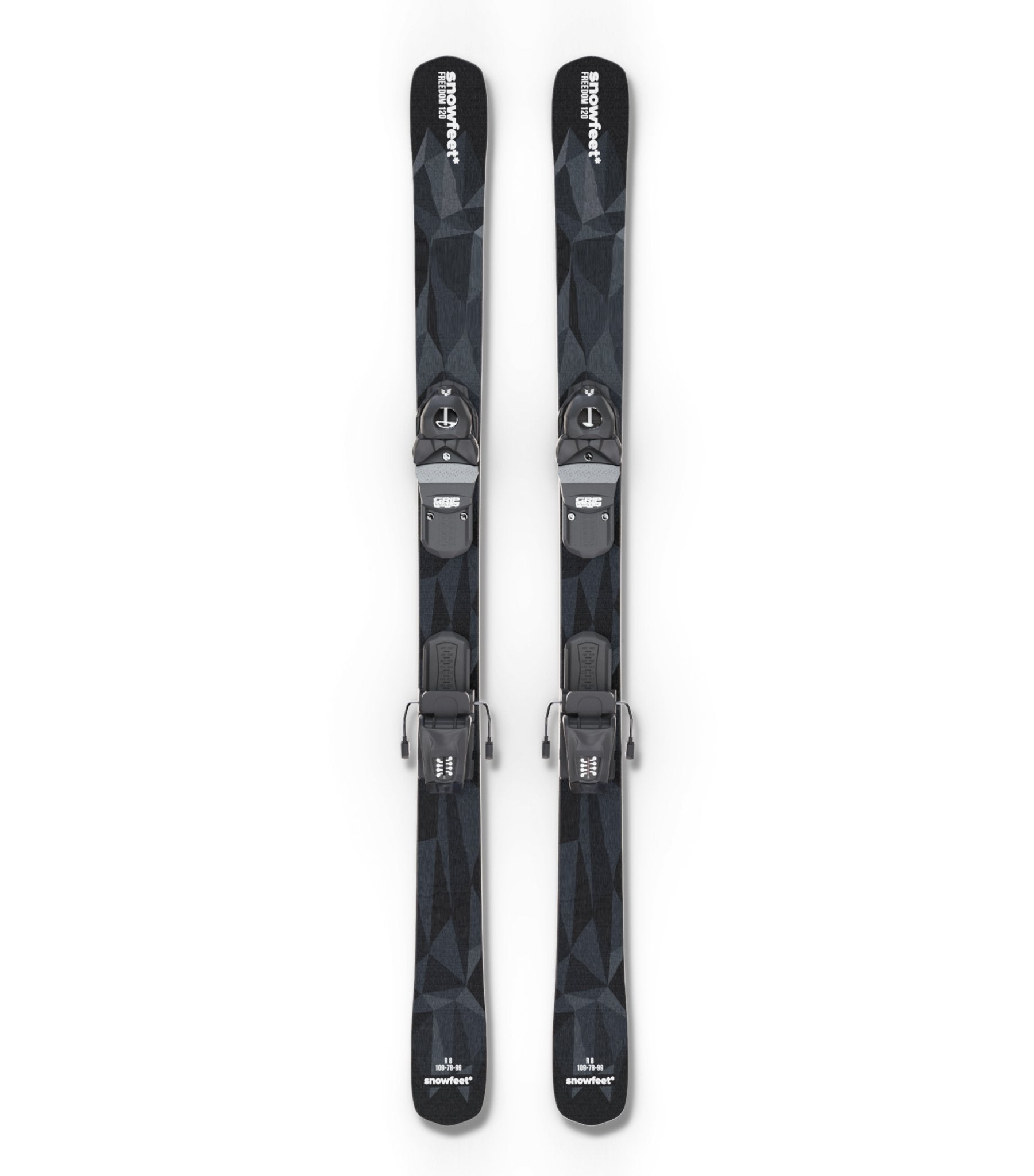
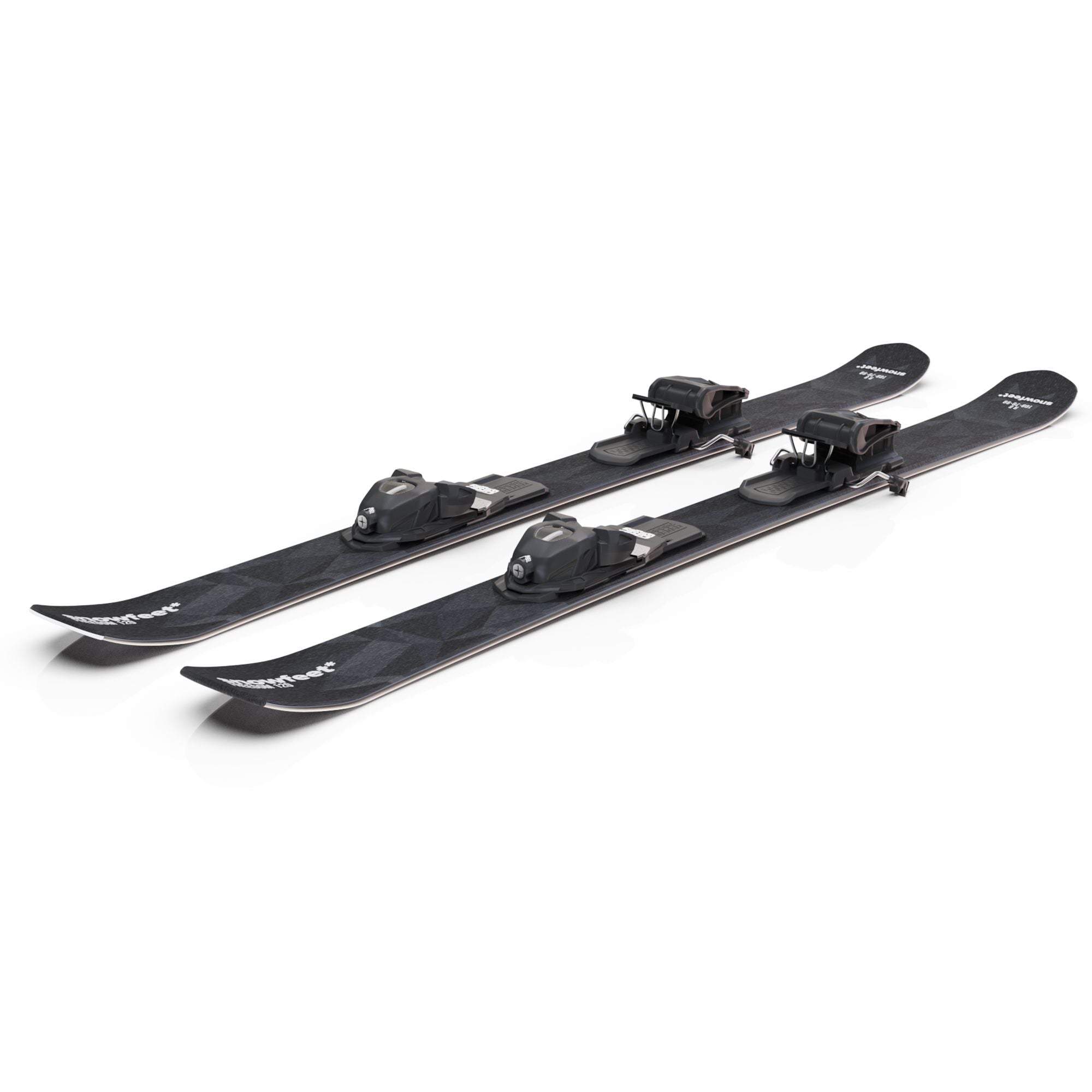
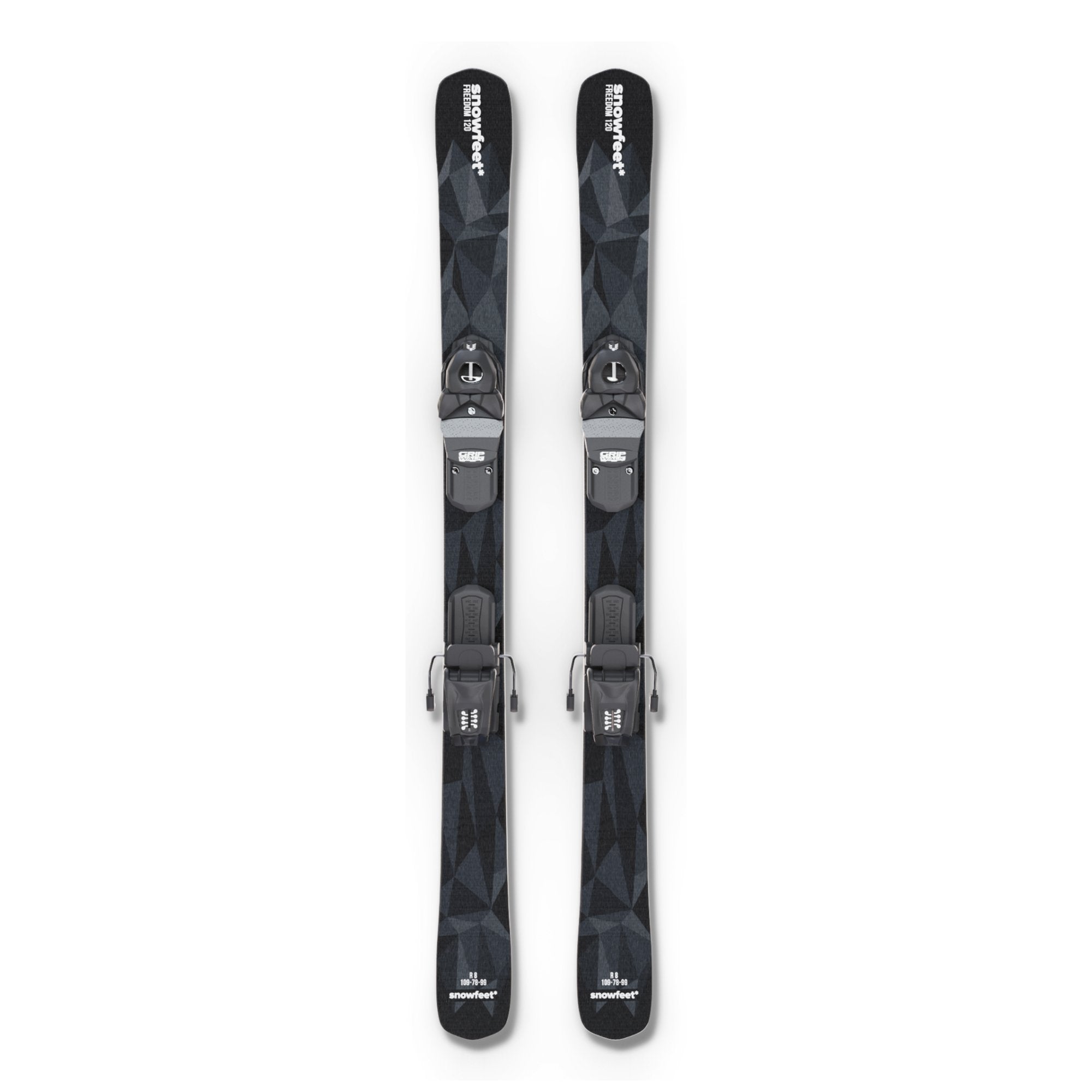
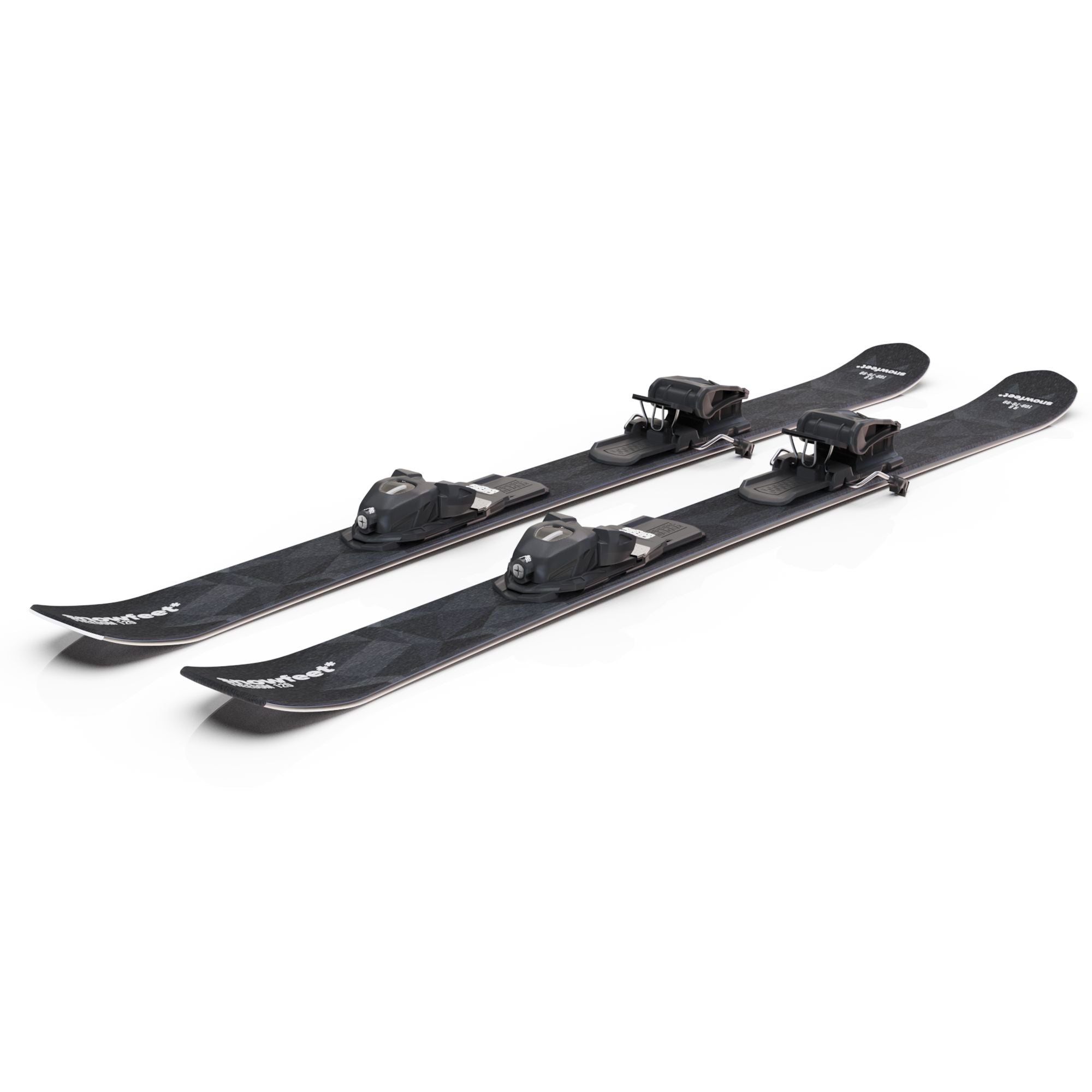
Laisser un commentaire
Ce site est protégé par hCaptcha, et la Politique de confidentialité et les Conditions de service de hCaptcha s’appliquent.